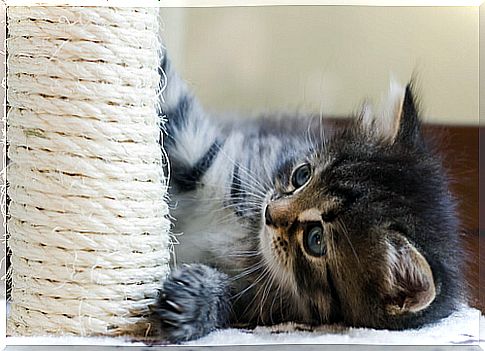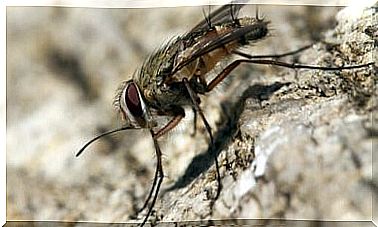How Do The Dreaded Cat Claws Work?
If something becomes a problem where a feline lives, it is the cat’s claws. The truth is that for cats it is essential to keep them sharp, and for this the living room sofa can be a good file. However, owners can offer other options that are just as attractive to the animal.
Cats put a lot of use to their nails. For example, to scratch or climb and climb. They are also a defense mechanism against the threat of another species. Even when nailing the nails on a surface, the cat stretches its entire body.
The ideal before the dreaded cat nails is to offer them spaces where they can make use of them without damaging anything. For example, climbing structures, an old piece of furniture, a disused bed.
Cat’s nails
Although cats are known to use their claws primarily for hunting and defense, it is not their only use. The claws of cats are related to the balance and mobility of the animal. They also use them to mark territory in the first months of life.
Another use that cats give to their nails is to relieve stress; An anxious feline will continually scratch a piece of furniture or toy. This can really become a communication between the pet and the owner, who will be able to understand the reasons for their cat’s behavior.
In some countries, cat claw removal is a fairly common procedure. There are many voices against this type of practice, as it is said that it is a kind of mutilation to which the animal is subjected. And these practices, in the future, can lead to walking problems, muscle atrophies and depression.

How to avoid damage from cat nails
- Keep your nails well trimmed. This simple habit is very practical and easy to put into practice; in addition to being hygienic, it helps prevent damage to furniture.
- Educate him to scratch the same space and the same toy. Scratchers or climbing frames are ideal for the cat to use its nails. In the case of structures, it offers them all the options: climb, hook and scratch.
- Cover the furniture with protectors. Although this may be an unsightly or palliative option, it is effective for caring for furniture. It is important to ensure that it is a durable protector: plastic ones are more recommended than fabric ones.
- Use repellants or water. Some owners choose to use water-filled sprays to scare off their cats; there are also repellants with unpleasant odors or that neutralize their odor. However, these types of applications must be done constantly to be effective.
- Anticipate the marking of areas. Cats mark their spaces by rubbing the neck or face in the chosen areas. In both parts the feline secretes an oil with its scent. A good trick to anticipate this form of ‘marking’ is to rub the furniture with a product that is unpleasant for the kitten.
Cat nail care
- Cut your nails. Some owners have the courage to trim their cats’ nails themselves. In this case, it is important to bear in mind that a suitable nail clipper must be used ; the nail cut should not exceed the inner vein, as the animal will be in great pain.
- Keep your paws hydrated. There are a large number of creams on the market to moisten the pads of dogs and cats. This is important to avoid dryness and injuries from it, especially in the case of cats, which tend to climb and climb.
- Ensure a good diet. As in humans, food influences the growth and strength of the nails.
- Special cat foods have the necessary nutrients to maintain the animal’s hair and nails. It is always preferable to provide this type of food, unless you have knowledge of complementary feeding.
- Use plastic nails. One option that has gained popularity among cat lovers is plastic nails. They consist of flexible plastic liners that are placed on the nails ; in this way, the animal will be able to continue scratching, but without causing the common damage to objects.









